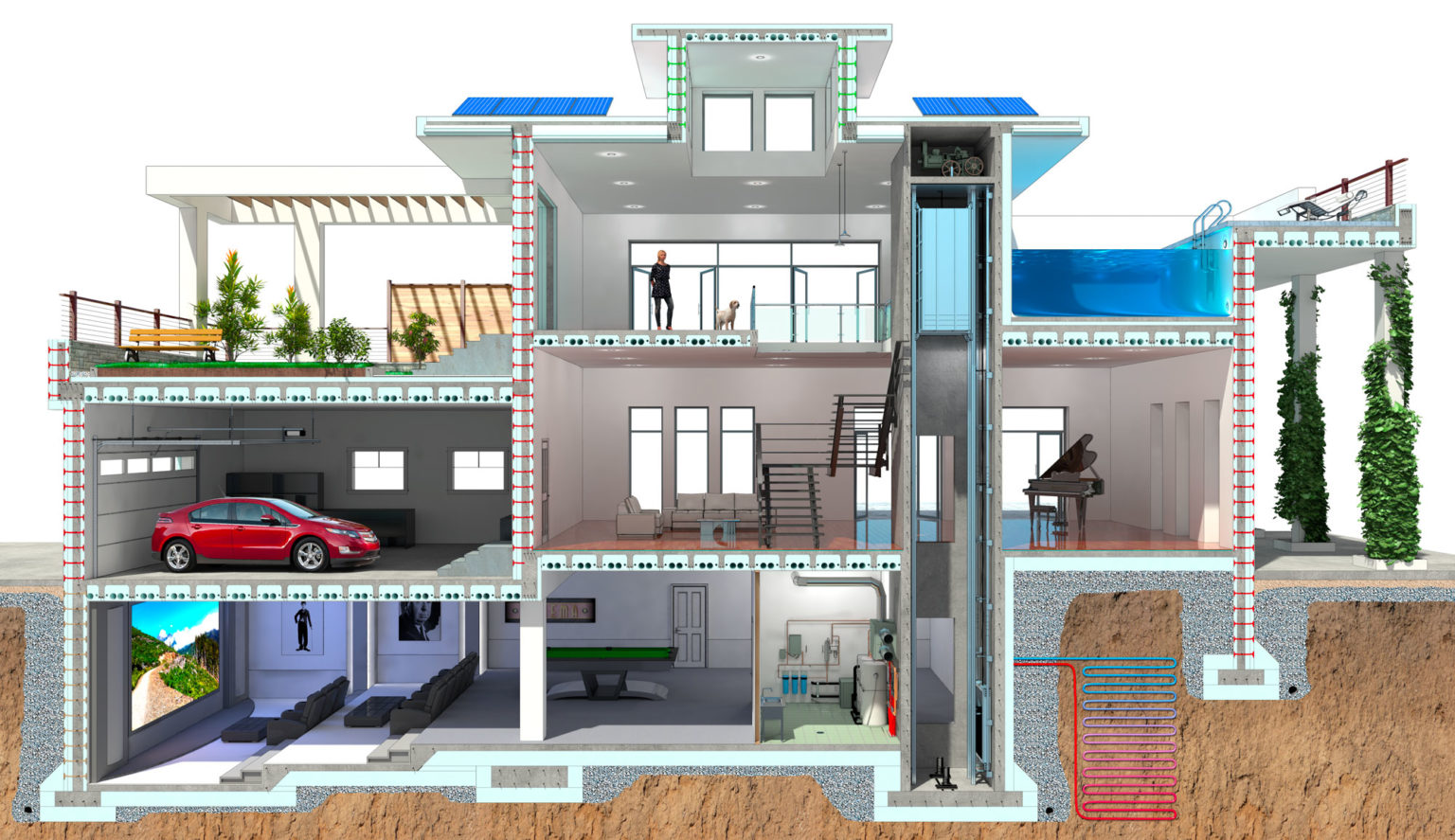CALL NOW FOR SERVICE 757-777-2716
Energy Cost Savings, Reduced Noise, and Healthier Environments Draw Many Homeowners to Building a Concrete House
Homes built with ICF walls require about 44% less energy to heat and 32% less energy to cool than a comparable wood-frame house, based on a study of 58 single-family homes located throughout theU.S. and Canada. Half had exterior concrete walls constructed using ICFs and the other half were comparable neighboring houses with wood-frame walls. All the houses were less than 6 years old. The energy savings come from the outstanding insulating values for ICF walls (as high as R-40, compared to wood frame’s R-9 to R-15 values) and tighter construction.
Because ICF walls use non-biodegradable materials, they are not vulnerable to rot or deterioration as is untreated lumber. The reinforcing steel, which is buried in and protected by the concrete, won’t rust or corrode.
Homeowners and builders in hurricane- and tornado-prone areas, including those rebuilding after Hurricane Katrina, are increasingly turning to concrete structural walls to stand up to fierce storms that would otherwise level a wood-frame home. Reward Wall Systems (PDF), a manufacturer of ICFs, even offers a $1-per-form discount to families who must rebuild homes destroyed by a devastating storm in regions officially declared federal disaster areas. Tests have shown that ICF walls can withstand flying debris from tornadoes and hurricanes with wind speeds of up to 250 mph. And the Federal Emergency Management Agency (FEMA) recommends ICF construction for building tornado-resistant safe rooms.

Insurance companies recognize concrete as being safer than any other form of construction when fire threatens a home. The plastic foams used in ICFs won’t add fuel to a fire because they are treated with flame retardants to prevent them from burning. In fire-wall tests, ICF and concrete walls withstood continuous exposure to intense flames and temperatures of up to 2,000 degrees F for as long as 4 hours without structural failure, compared with wood-frame walls that collapsed in an hour or less.
Those who live in ICF homes say the absence of cold drafts and unwanted noise are the biggest pluses, even topping the energy-saving benefits. Houses built with ICF walls have more even air temperatures and are far less drafty. The barrier formed by the foam-and-concrete sandwich cuts air infiltration by as much as 75% when compared with a typical frame house. The high thermal mass of the concrete also buffers the home’s interior from extreme outdoor temperatures, while the continuous layer of foam insulation minimizes temperature fluctuations inside the home by eliminating the cold spots that can occur in frame walls along the studs or at gaps in the insulation. ICF walls are equally effective at keeping out loud noises. The greater mass of concrete walls can reduce sound penetrating through a wall by more than 80% when compared to stick-built construction. Although some sound will still penetrate the windows, a concrete home is often two-thirds quieter than a wood-frame home.
ICF walls contain no organic material, so they won’t support the growth of mold, mildew and other potentially harmful microorganisms. They also reduce the infiltration of air that can bring in outside allergens. The polystyrene foam used in many ICF walls is completely nontoxic and free of formaldehyde, asbestos and fiberglass. In tests of the indoor air quality in ICF homes, no harmful emissions were detected. In areas where radon is a concern, ICF foundation walls help to minimize the leakage of radon gas into homes.